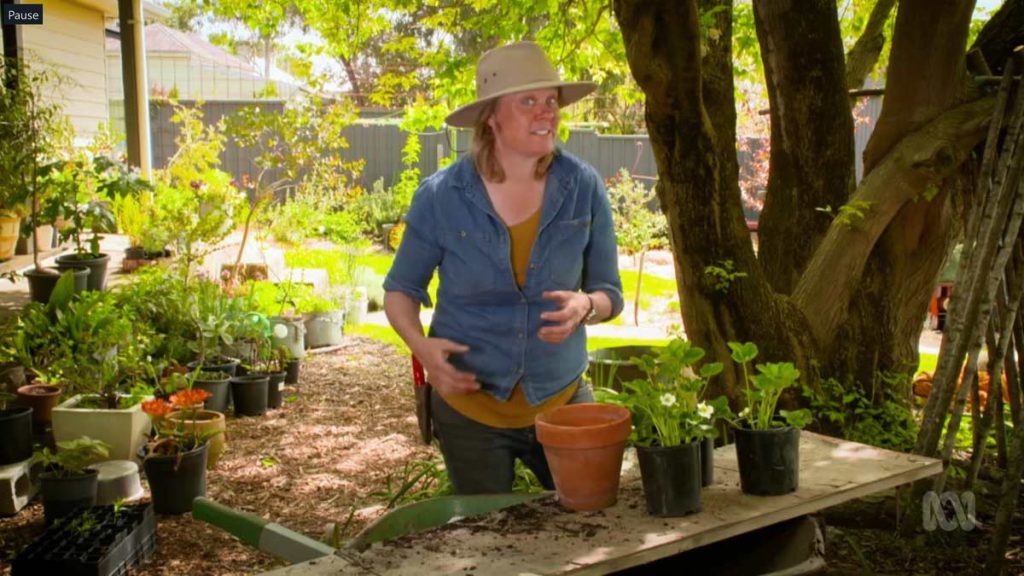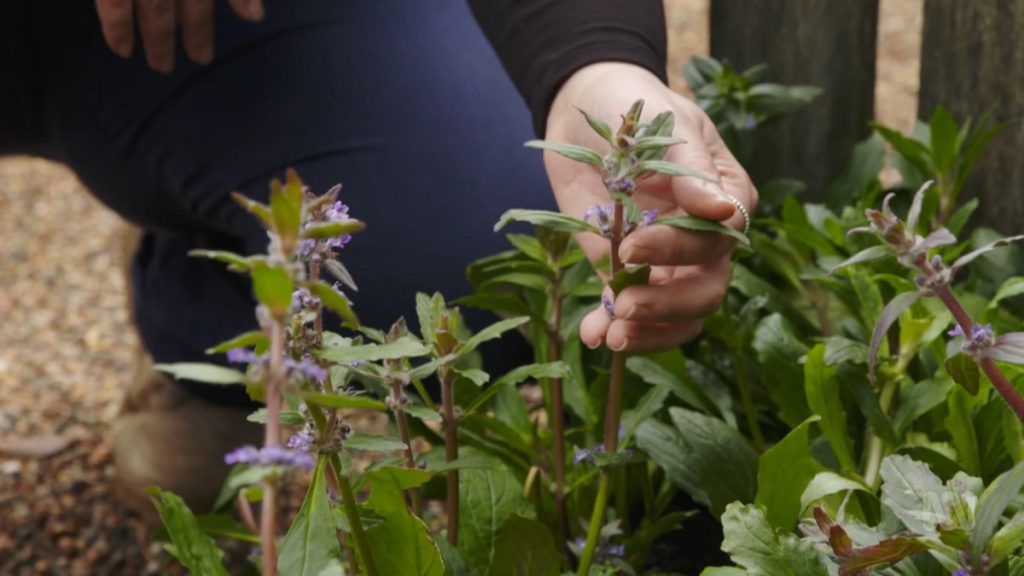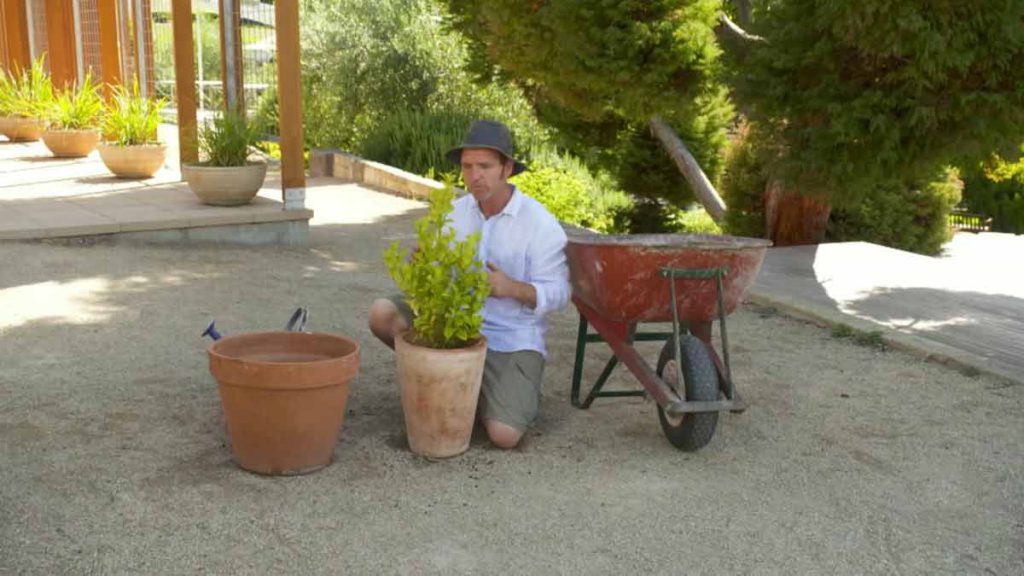Gardening Australia episode 39 2021: Gardening Australia celebrates the holiday season as Costa Georgiadis visits Jimmy and Jane Barnes at home, Clarence Slockee transforms a boggy spot into a rain garden, Jerry Coleby-Williams explores fragrant frangipani, and Millie Ross makes a colourful window box.
Inspiring, entertaining and full of practical advice, join Costa Georgiadis and the team as they unearth gardening ideas, meet avid gardeners and look at some of the most inspiring gardens from across the country.
Gardening Australia episode 39 2021
Stop and Smell the Roses
Costa visits the first family of rock’n’roll, Jimmy and Jane Barnes, to see their beautiful country garden and learn how they’ve enjoyed spending time at home this year. Scottish-born Jimmy Barnes has been a bedrock of the Aussie music scene for close to 50 years. From the heady days of Cold Chisel, and the most famous song about an Australian plant, to a barrow-full of solo albums – you could be forgiven for thinking he had done it all. That is until 2020, when Jimmy Barnes became a gardener!
In 2020, alongside his partner in life and work for 40 years in 2020, like most of us, Jimmy & Jane were grounded. Live music and the performing arts were one of the first industries to be shut down. While they had bought the southern highlands home & garden 15 years ago, Jane & Jimmy had never experienced the 4 full four seasons here. Jane – “Jimmy had been doing 3 tours, almost at once. Truly with our lifestyle we never really stopped. It was a big adjustment! But now we look at that time as a gift, it has changed a lot for us not only now, but how we want to live in the future”.
Hoe Hoe Hoe – Gardening Australia episode 39 2021
Tino explains why there are different styles of garden hoe and shows which is the best one for each job. Hoes are one of the oldest tools used in agriculture and are great for shaping and clearing soils, harvesting root crops and weeding. But with more than 30 different varieties, it’s important to know which hoe is best for the task in hand.
The best time to weed with a hoe is when weeds are small seedlings – by the time they’ve developed a decent taproot you’ll have to get them out with a mini mattock or other digging tool. Hoes are designed to disturb just the top level of soil, where the young roots are growing, allowing you to dislodge the weeds around a row of vegies without disturbing the crop itself.
Improve Your View
Millie gets stuck into a perfect summer project, constructing a window box from salvaged timber to create a flower-filled view. Most gardeners are constantly looking for spots to put more plants. In the ground, in pots, in the house, or the house! Whenever you tackle a project like this, it is good to start with sketches. To work out what you want it to look like, and then how to make it!
Plants are of course, most important. And the sunny location offers lots of opportunity. Just because it is a limited space doesn’t have to limit imagination.
You could line the box with some shade cloth or fabric, and use the whole thing as a planter, but Millie is using multiple pots to allow flexibility of the display. Each is filled with quality potting mix with around 20% perlite, to lighten the mix while still holding moisture. The plant-packed pots will take regular water and care, but their position on the house will make them easily accessed.
Once the pots are planted, the box is attached to the windowsill using a simple metal bracket. It is important to consider the health of the structure underneath – the window – when you attach the box. You don’t want the wall behind to stay wet, so it is worth including a spacer to stop it making continuous contact with the wall.
Butterfly Effect – Gardening Australia episode 39 2021
Sophie joins a community project working with schools to restore habitat for a special rare butterfly. The Greenfields Wetland, located 16km north of Adelaide, is part of a large chain of wetlands constructed by the City of Salisbury to enhance the landscape and provide valuable habitat for wildlife. As part of Adelaide’s goal to become a National Park City, a community project here is focusing on creating butterfly friendly habitat and ensuring the survival of one particular butterfly – the Yellowish Sedge Skipper (Hesperilla flavescens).
Tony Flaherty, Team Leader, Coast and Seas at Green Adelaide, says the previously abundant butterfly species has “disappeared locally from the Adelaide Plains but it’s also up in the top 20-odd lists of nationally threatened butterflies. So what we’re doing here locally is also really nationally important because it’s one of those butterflies in danger.”
Farming Frangipanis
Jerry explores an incredible collection of one of his all-time favourite plants, fragrant frangipani. Jerry’s on Queensland’s beautiful Sunshine Coast to visit a gardener with an incredible collection of one of his all-time favourite plants – fragrant frangipani.
Perhaps no plant says “Tropicana” more than the frangipani. Native to the Americas and Caribbean, frangipanis (genus Plumeria) are beloved across the world where their heady scent, lurid shades and delicate petals have become short hand for relaxed tropical style.
Someone who knows this better than most is frangipani farmer Brenden Clark. “My father was an avid palm collector in Sydney obsessed with growing things that shouldn’t grow that far south. He also had some other tropical plants, and that’s where I was exposed to frangipanis.”
“We started farming from the end of 2004. We were looking for trees to do some landscaping and we noticed frangipanis were hard to find outside of the standard yellows and whites…so we thought there could be a gap in the market. We put an ad in the paper ‘cash paid for unwanted frangipanis’ and got some big trees people were going to throw out anyway. We used those trees to start the farm”.
What a Drain!
Clarence turns a problem damp area into a plant-filled feature, known as a rain garden. Rain gardens are a way to deal with poorly drained or permanently boggy areas, or those that are periodically wet. They allow water to collect and slowly seep into the subsoil, with plants filtering nutrients and sediment in a process known as biofiltration. Clarence is creating a naturalistic style rain garden, that mimics a seasonal creek. “It’s a natural, low-cost solution to consider for drainage with the added benefit of bringing in a slice of the Australian bush into your yard.”




